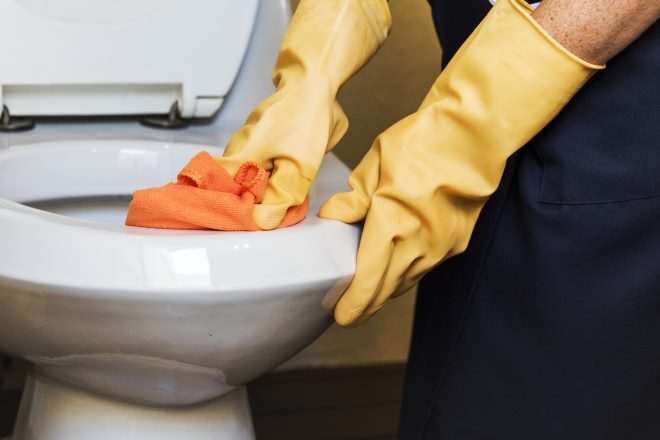Effective Techniques to Clean Your Tub Easily
Maintaining a sparkling clean bathtub doesn't have to be a dreaded chore. With the right cleaning products and techniques, you can transform a grimy, soap-scum-covered tub into a gleaming centerpiece of your bathroom. This guide explores practical methods and effective products that make tub cleaning less time-consuming and more efficient.

Bathtubs are notorious for collecting soap scum, hard water stains, and even mildew over time. These unsightly buildups not only make your bathroom look unkempt but can also harbor bacteria and mold. Fortunately, with the right approach and cleaning products, you can keep your tub looking pristine without excessive scrubbing or harsh chemicals. Whether you have a porcelain, acrylic, or fiberglass tub, there are specific techniques and solutions that can make cleaning easier while protecting your tub’s surface.
Essential Products for Easy Tub Cleaning
The foundation of effortless tub cleaning starts with selecting the right products. For daily maintenance, a mild bathroom cleaner with a pH-balanced formula works well for most tub materials. For deeper cleaning, oxygen bleach-based cleaners are effective against stubborn stains without damaging surfaces. Microfiber cloths, soft-bristled brushes, and extendable scrubbers can reach difficult areas without requiring uncomfortable positions. Natural alternatives like white vinegar, baking soda, and lemon juice provide eco-friendly options that are both effective and gentle. Having a squeegee on hand for quick after-shower wipe-downs can significantly reduce buildup, making your regular cleaning sessions much easier.
Step-by-Step Process to Clean Your Tub Easily
Begin by removing all bath products and accessories from the tub area. Rinse the tub thoroughly with warm water to loosen surface dirt and debris. For regular cleaning, spray your chosen cleaner liberally across all surfaces, paying special attention to corners and around fixtures where grime tends to accumulate. Allow the cleaner to sit for 5-10 minutes to break down soap scum and oils before scrubbing. Use a soft-bristled brush for general cleaning and an old toothbrush for grout lines and fixture details. For stubborn stains, make a paste with baking soda and water, apply it directly to the problem area, and let it sit for 20 minutes before scrubbing. Finally, rinse thoroughly with clean water and dry the surface with a microfiber cloth to prevent water spots.
Tackling Different Types of Tub Stains
Different stains require different approaches to clean your tub easily. For hard water deposits and mineral buildup, white vinegar or a commercial descaling solution works effectively by dissolving the calcium and lime deposits. Apply the solution, let it sit for 15-30 minutes, then scrub and rinse. Rust stains respond well to lemon juice or commercial rust removers containing oxalic acid—apply directly to the stain, wait a few minutes, then scrub gently. For mold and mildew, a solution of one part bleach to four parts water can be sprayed on affected areas, allowed to sit for 10 minutes, then scrubbed away. Always ensure proper ventilation when using bleach products. For stubborn soap scum, a mixture of equal parts vinegar and dish soap can cut through the film effectively.
Preventative Maintenance for Easier Cleaning
Prevention is the key to maintaining a clean tub with minimal effort. After each use, quickly rinse the tub with clean water to remove soap residue and body oils before they have a chance to dry and harden. Keep a squeegee in your bathroom and spend 30 seconds wiping down the tub surfaces after bathing. This simple habit dramatically reduces soap scum buildup. Consider applying a tub and tile sealer every six months to create a protective barrier that repels water and prevents stain absorption. Installing a water softener if you have hard water can significantly reduce mineral deposits on all bathroom fixtures. Finally, ensure your bathroom has adequate ventilation to prevent mold and mildew growth—run the fan during and after showers or open a window if possible.
Natural vs. Chemical Cleaners for Tub Maintenance
Both natural and commercial cleaning products offer effective solutions for tub cleaning, each with distinct advantages. Natural cleaners like vinegar, baking soda, and essential oils provide environmentally friendly alternatives that are generally safer for households with children, pets, or individuals with chemical sensitivities. A paste of baking soda and water excels at scouring without scratching, while vinegar’s acidity effectively dissolves mineral deposits and soap scum. Commercial cleaners often contain specialized ingredients designed to tackle specific bathroom challenges, such as mold inhibitors or mineral dissolvers, and may work faster with less scrubbing required. When choosing between these options, consider your tub material—acrylic and fiberglass tubs benefit from gentler cleaners, while porcelain can withstand more abrasive products.
Specialized Tools That Make Tub Cleaning Easier
The right tools can transform tub cleaning from a backbreaking chore to a manageable task. Extendable-handle scrubbers eliminate the need to bend and stretch, making them ideal for those with mobility issues or back problems. Electric cleaning brushes provide mechanical scrubbing power that can reduce cleaning time by up to 50% while requiring less physical effort. Microfiber cloths and mops trap more dirt and bacteria than traditional cleaning cloths and leave fewer streaks when drying. Silicone squeegees with comfortable handles make daily maintenance quick and effective. For grout lines and tight spaces around fixtures, detail brushes with angled heads can reach areas that regular brushes miss. Steam cleaners offer a chemical-free option that sanitizes while loosening stubborn grime through the power of high-temperature vapor.
Maintaining a clean bathtub doesn’t require hours of scrubbing or harsh chemicals when you combine the right products, techniques, and preventative measures. By establishing a regular cleaning routine and addressing issues before they become stubborn problems, you can enjoy a sparkling clean tub with minimal effort. Remember that consistency is key—a few minutes of maintenance after each use can save you from lengthy deep-cleaning sessions later on. With these strategies in place, you’ll find that keeping your tub clean becomes an easy part of your regular household routine rather than a dreaded chore.




